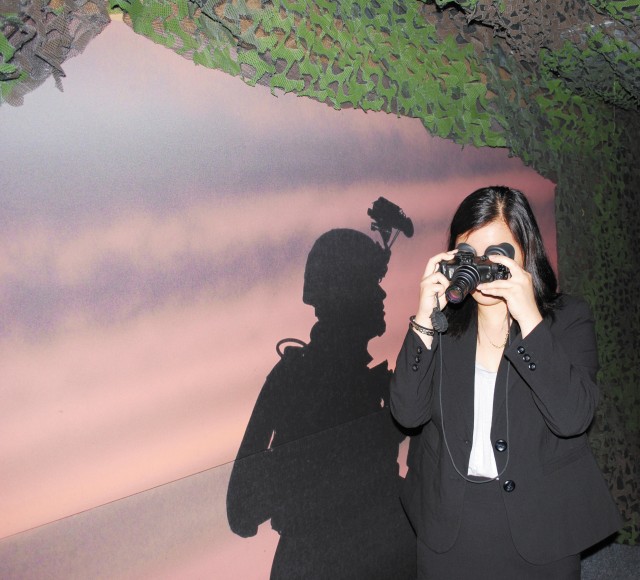
Capturing teenagers' attention wasn't a problem for the U.S. Army's Educational Outreach Program as it showcased cutting-edge technologies during one of the nation's top high schools' Symposium to Advance Research in Alexandria, Va., May 28.
With inventive research in tow, the Army's director of Research and Laboratory Management Dr. John Parmentola presented some of the science behind the nation's defense capabilities to about 100 students at the Thomas Jefferson High School for Science and Technology at its first tjSTAR event.
"Their future is our country's future," said Parmentola after showing a group of students a video with some of the Army's inventions being used. "What the Army can provide to these students is something unique. We can give them research experience they could not possibly get anywhere else."
Along with the Army, many of the nation's leaders in science, technology, research and humanities also came out to inform and educate the students who attend the magnet school.
After a technology video, the students were able to see interactive displays of an unmanned flying vehicle's engine and thermal imaging abilities; flexible displays; and the PackBot tactical robot, among other larger outdoor exhibits.
"This is really cool, innovative technology," said sophomore Stefanie Karp after asking questions about the science behind the flexible video displays, which the U.S. Army Research Laboratory is developing to be extremely thin, strong and bendable for Soldiers.
Although only 16, she has years of scientific education under her belt and was even on the Army's science and math eCYBERMISSION competition national finalist team in the seventh grade.
She said she's not completely sure what she wants to do when she graduates from college, but she's definitely interested in what the Army is accomplishing in science.
"I think being a researcher is a great way to combine math and science, and I'm interested in benefitting people," Karp said. "I can see a lot of applications to help people in the future coming from this research."
Some students weren't as familiar with the Army's scientific advancements. Senior Michael Ross didn't know what to expect when he came to the Army displays but found he was interested in the information he was presented.
"I was happily surprised," said Ross, who will be attending Duke University in the fall. "I thought the presenter was interesting, and it was cool that he [Parmentola] went into all the technology. Before this I hadn't really thought of the Army in technology research. Now I think there are a lot of research opportunities that go on in the Army that would be cool to work on."
The line to get into the night vision simulation trailer, where students waited to get hands-on night vision experience, seldom was short.
Ross said he enjoyed learning about the technology on display, but his favorite part of the Army innovations was the night vision goggles and heat sensors from the Night Vision and Electronic Sensors Directorate.
"The Army owns the night," Parmentola said. "The Army pioneered NVT technology and still leads in the world. It gives us an advantage."
The U.S. Army Research Laboratory also showcased a robotic vehicle with autonomous navigation capabilities that kept the students and adults' attentions.
"This is exciting," said Larry Gaudreault, the director of the biotechnology laboratory at the school. "I can see a direct relationship between what they have here and what they're doing for the armed forces."
As an educator, Gaudreault said he thinks the Army and the other agencies coming out for the day is great for the students.
"It's one thing for us to tell them in a classroom, but it's so important for them to see industry and the government applications," he said. "They love it."
While Army representatives educated the students, Dr. Thomas Killion, the deputy assistant secretary of the Army for Research and Technology and the Army's chief scientist, spoke to a distinguished group at the school's 2009 "Tommy" Awards held the evening after tjSTAR to show appreciation to the school's parents, government and industry supporters.
Killion put the emphasis on keeping students interested and performing well in math and science in a greater perspective.
"Our students need encouragement," he said. "The need for the U.S. Army to stay technologically advanced is great, and America's economical survival requires more students to seek science and technology careers. Tomorrow's technology is in the minds of our youth today."

Social Sharing